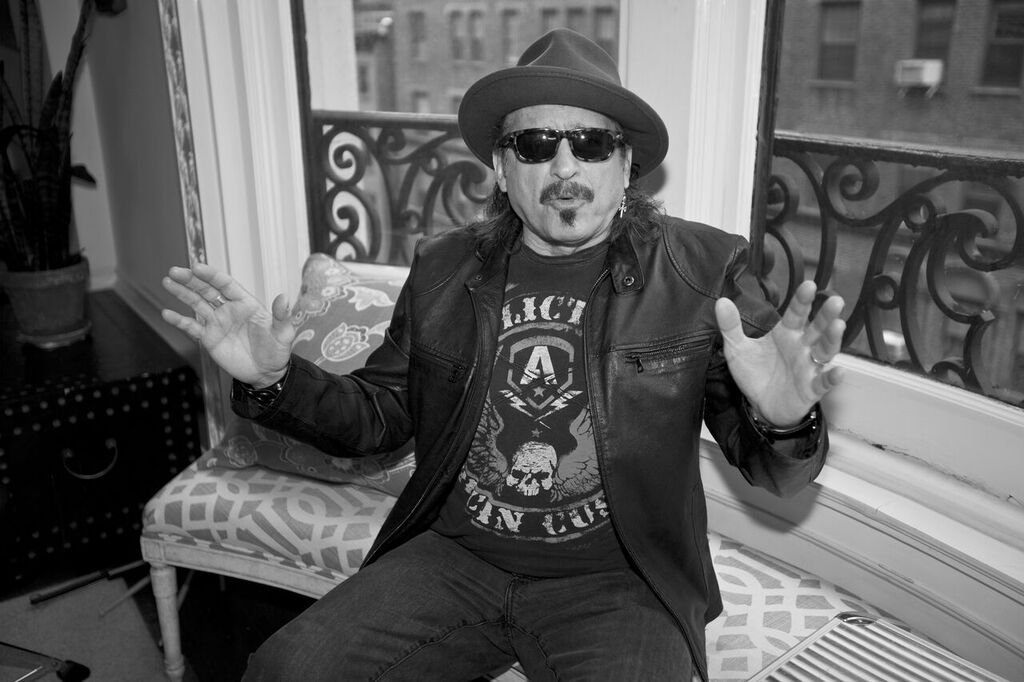.jpg)

"In 2016, where an always-connected generation screams for attention through new, often contrived definitions of “cool” and surprisingly predictable proclamations of uniqueness, singer and spoken word artist Tony Adamo arrives seemingly from nowhere as a true anachronism: a performer who is authentically “cool” in a timeless, almost reckless way that almost no popular artist today can match." SOULTRACKS
Friday, March 29, 2013
Artists - Eddie Gale
Recording period between
1966-1969
Having developed his skills amongst the cream of New York's hard bop players, Eddie Gale helped ring in jazz's controversial new thing during the 1960s and 1970s on a series of influential releases. His inspired trumpet playing graced Cecil Taylor's Unit Structures, Larry Young's Of Peace and Love and a series of recordings and performances with Sun Ra's Arkestra. He also cut a pair of under-acknowledged soul-jazz influenced albums as a leader for Blue Note at the end of the '60s.
Born in Brooklyn, NY, in 1941, Eddie Gale experienced the world of jazz firsthand through the borough's community of jazz musicians. The great bebop pianist Bud Powell lived nearby and occasionally stopped outside the young musician's house to hear him practice. Gale received lessons from trumpeter Kenny Dorham and before long was sitting in on jam sessions with the likes of drummers Art Blakey and Max Roach and saxophonists Illinois Jacquet, Sonny Stitt, and Jackie McLean. During these years, Gale absorbed the styles of the trumpet greats from pioneers like Louis Armstrong and Dizzy Gillespie to hard bop practitioners like Donald Byrd, Lee Morgan, and Freddie Hubbard. Though these musicians made a lasting impression, Gale came of age during the dawn of jazz's new thing. John Coltrane's 1965 album Ascension heralded the arrival of a new generation of players like Eric Dolphy, Archie Shepp, Albert Ayler, Cecil Taylor, and Pharoah Sanders. The new sounds made a strong impression on the young musician. Though he never recorded with the great tenor saxophonist, Gale had the privilege of sharing the stage with Coltrane on a number of occasions.
In the early '60s, Gale (then in his early twenties) was introduced to composer, keyboardist, and intergalactic bandleader Sun Ra. Gale toured and recorded with Ra's Arkestra throughout the '60s and '70s and remained in touch with Ra until his death in 1993. Ra's perplexing tutelage extended from practical musical instruction to lessons on subjects like Egyptology, Phonetics, and Hieroglyphics. Gale's trumpet can be heard on the Arkestra's 1965 recording Secrets of the Sun.
The year that followed was a major breakthrough for Gale. Cecil Taylor brought the trumpeter on board for the recording of the pianist's classic Blue Note debut Unit Structures. As a part of a seven-piece ensemble, Gale played alongside alto saxophonist Jimmy Lyons, bassist Henry Grimes, and drummer Andrew Cyrille: some of the finest proponents of the developing free jazz. Following the date with Taylor, Gale joined organist Larry Young's group for the recording of Of Love and Piece. Besides having a direct impact on his developing sound, the recordings won the trumpeter an admirer in Blue Note co-founder Francis Wolff, who funded the release of Eddie Gale's Ghetto Music (1968) and Black Rhythm Happening (1969). For the sessions, Gale assembled a sextet and nonet respectively, the latter of which included the great Coltrane drummer Elvin Jones and the soprano saxophone of Jimmy Lyons. On both dates, the ensemble was joined by an 11-piece vocal group dubbed the Noble Gale Singers. Combining the bebop and hard bop of his early teachers, the avant-garde sensibilities acquired from Taylor and the soul-jazz fire of Young, Gale's music expertly bridged the gap between long-standing jazz traditions and the newer styles that attempted to shatter them. Unfortunately, with the transition of Blue Note into the hands of Liberty records, Gale's contract was not renewed, thus ending a potentially fruitful partnership.
At the start of the '70s, Gale headed for the West Coast where he eventually settled, connecting with a community of musicians in and around the California Bay Area. Following a brief stint as Artist in Residence at Stanford University, the trumpeter took the same position at the university in San Jose. As a result of his work within the city's musical community, Mayor Norm Mineta proclaimed Gale San Jose's Ambassador of Jazz in 1974.
Gale continued to perform and record with Sun Ra during the decade, playing on a series of late-'70s albums including Lanquidity, The Other Side of the Sun (both 1978), and On Jupiter (1979). Though the trumpeter released few of his own albums in the decades that followed, his creative spirit remained undiminished. In the 1990s, Gale formed the Inner Peace Jazz Orchestra which performed at the Concert for World Peace. Helping to bring jazz into the 21st century, the trumpeter made numerous appearances with Oakland hip-hop outfit the Coup, whereby Gale's trumpet could be heard engaging with the music's breakbeats and turntables. ~ Nathan Bush
.jpg)
.jpg)
Subscribe to:
Post Comments (Atom)
No comments:
Post a Comment